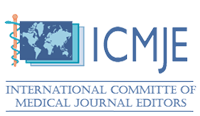ПРЕОДОЛЕНИЕ ФАРМАКОРЕЗИСТЕНТНОСТИ ПРИ ДЕПРЕССИИ НА ФОНЕ БОЛЕЗНИ АДДИСОНА У ПОЖИЛОЙ ПАЦИЕНТКИ: ОБЗОР ЛИТЕРАТУРЫ И КЛИНИЧЕСКИЙ СЛУЧАЙ
Аннотация
Цель исследования. Представить читателю систематический обзор литературы о взаимосвязи депрессивных состояний и, шире, психических расстройств с недостаточностью коры надпочечников, о роли надпочечниковой патологии в развитии резистентности к психотропным средствам или их непереносимости, о принципах адекватной заместительной терапии при первичной недостаточности коры надпочечников (болезни Аддисона), о роли максимально физиологической заместительной терапии в нормализации не только соматического, но и психического состояния пациентов с этим расстройством, о важности учёта возможного полиэндокринного характера расстройства, а затем описать клинический случай из нашей практики, ярко иллюстрирующий эти тезисы.
Методология проведения работы. Нами был проведён поиск литературы с использованием соответствующих ключевых слов в международных базах данных PubMed, Google Scholar, Elsevier ClinicalKey и Elsevier ScienceDirect, а также в российской базе данных РИНЦ e-library и в библиографических списках основополагающих руководств по эндокринологии и по терапевтически резистентным депрессиям.
Результаты. Представленные нами в настоящем обзоре литературные данные, вкупе с анализом приводимого авторами клинического случая, иллюстрируют важность максимально приближённой к физиологическому паттерну секреции коры надпочечников заместительной терапии при болезни Аддисона, роль коррекции недостаточности минералокортикоидов, надпочечниковых андрогенов и нейростероидов, наряду с глюкокортикоидной недостаточностью, в устранении всех симптомов болезни, включая психические, а также важность психообучения этих пациентов и их родственников, и важность тесного союза психиатра и эндокринолога при лечении таких пациентов.
Область применения результатов. Полученные нами в процессе составления настоящего обзора результаты и выводы, вкупе с представленным нами анализом клинического случая и выводами из него, заслуживают самого широкого применения при лечении пациентов с недостаточностью коры надпочечников и сопутствующей психической патологией.
Скачивания
Литература
Yukina M.Yu., Troshina E.A., Platonova N.M., Bel’tsevich D.G. Nadpochechnikovaya nedostatochnost’ [Adrenal insufficiency]. Sbornik metodicheskikh rekomendatsiy (v pomoshch’ prakticheskomu vrachu) [Collection of guidelines (to help a practitioner)] / ed. E.A. Troshina. M., 2017, pp.149-192.
Popov M.YU. Komorbidnaya somaticheskaya patologiya kak predposylka terapevticheskoj rezistentnosti pri depressii. Soobshchenie 1: Mekhanizmy formirovaniya rezistentnosti [Comorbid medical illness as a predisposing factor for the treatment-resistant depression. Part 1: Mechanisms of treatment resistance]. Obozrenie psihiatrii i medicinskoj psihologii imeni V.M. Bekhtereva, 2016, no. 4, pp. 67-72. https://www.bekhterevreview.com/jour/article/view/48
Abdel-Motleb M. The neuropsychiatric aspect of Addison’s disease: a case report. Innov Clin Neurosci, 2012, vol. 9, no. 10, pp. 34-36.
Abulseoud O., Sane N., Cozzolino A. et al. Free T4 index and clinical outcome in patients with depression. J Affect Disord, 2007, vol. 100, no. 1-3, pp. 271-277. https://doi.org/10.1016/j.jad.2006.10.012
Albert S.G., Sitaula S. Etomidate. Adrenal Insufficiency and Mortality Associated With Severity of Illness: A Meta-Analysis. J Intensive Care Med, 2020, pp. 885066620957596. https://doi.org/10.1177/0885066620957596
Allolio B., Arlt W., Hahner S. DHEA: why, when, and how much--DHEA replacement in adrenal insufficiency. Ann Endocrinol (Paris), 2007, vol. 68, no. 4, pp. 268-273. https://doi.org/10.1016/j.ando.2007.06.018
Anglin R.E., Rosebush P.I., Mazurek M.F. The neuropsychiatric profile of Addison’s disease: revisiting a forgotten phenomenon. J Neuropsychiatry Clin Neurosci, 2006, vol.18, no. 4, pp. 450–459. https://doi.org/10.1176/jnp.2006.18.4.450
Arana G.W., Ross J.B., Ornsteen M. The dexamethasone suppression test for diagnosis and prognosis in psychiatry. Arch Gen Psychiatry, 1985, vol. 42, pp. 1193–1204. https://doi.org/10.1001/archpsyc.1985.01790350067012
Attardi B.J., Zeleznik A., Simhan H et al. Comparison of progesterone and glucocorticoid receptor binding and stimulation of gene expression by progesterone, 17-alpha hydroxyprogesterone caproate, and related progestins. Am J Obstet Gynecol, 2007, vol. 197, no. 6, pp. 599. https://doi.org/10.1016/j.ajog.2007.05.024
Baulieu E., Schumacher M. Progesterone as a neuroactive neurosteroid, with special reference to the effect of progesterone on myelination. Steroids, 2000, vol. 65, no. 10-11, pp. 605-612. https://doi.org/10.1016/s0039-128x(00)00173-2
Burton C., Cottrell E., Edwards J. Addison’s disease: identification and management in primary care. Br J Gen Pract, 2015, vol. 65, no. 638, pp. 488-490. https://doi.org/10.3399/bjgp15X686713
Carroll B.J. A specific laboratory test for the diagnosis of melancholia: standardization, validation, and clinical utility. J Clin Endocrinol Metab, 1981, vol. 51, pp. 433–437. https://doi.org/10.1001/archpsyc.1981.01780260017001
Carrozza C., Lapolla R., Gervasoni J et al. Assessment of salivary free cortisol levels by liquid chromatography with tandem mass spectrometry (LC-MS/MS) in patients treated with mitotane. Hormones (Athens), 2012, vol. 11, no. 3, pp. 344-349. https://doi.org/10.14310/horm.2002.1363
Cleghorn R.A. Adrenal cortical insufficiency: psychological and neurological observations. Can Med Assoc J, 1951, vol. 65, no. 5, pp. 449–454.
Daniell H. Opioid and benzodiazepine contributions to etomidate-associated adrenal insufficiency. Intensive Care Med, 2008, vol. 34, no. 11, pp. 2117-2118. https://doi.org/10.1007/s00134-008-1264-8
Delitala A.P., Fanciulli G., Maioli M et al. Primary symptomatic adrenal insufficiency induced by megestrol acetate. Neth J Med, 2013, vol. 71, no. 1, pp.17-21.
Desai D., Gupta K., Kumar R., Biswas A. Levosulpiride-induced neuroleptic malignant syndrome in rheumatoid arthritis. BMJ Case Rep, 2018, vol. 2018, pp. 2018-224679. https://doi.org/10.1136/bcr-2018-224679
Dubrovsky B. Natural steroids counteracting some actions of putative depressogenic steroids on the central nervous system: potential therapeutic benefits. Med Hypotheses, 1997, vol. 49, no. 1, pp. 51-55. https://doi.org/10.1016/s0306-9877(97)90252-8
Dux S., Bishara J., Marom D et al. Medroxyprogesterone acetate-induced secondary adrenal insufficiency. Ann Pharmacother, 1998, vol. 32, no. 1, pp. 134. https://doi.org/10.1345/aph.17122
Elger W., Beier S., Pollow K. et al. Conception and pharmacodynamic profile of drospirenone. Steroids, 2003, vol. 68, no. 10-13, pp. 891-905. https://doi.org/10.1016/j.steroids.2003.08.008
Engel G.I., Margolin S.G. Neuropsychiatric disturbances in internal disease. Arch Int Med, 1942, vol. 70, pp. 236–259.
Fava G.A., Sonino N., Morphy M.A. Major depression associated with endocrine disease. Psychiatr Dev, 1987, vol. 5, no. 4, pp. 321–348.
Fleseriu M, Petersenn S. Medical therapy for Cushing’s disease: adrenal steroidogenesis inhibitors and glucocorticoid receptor blockers. Pituitary, 2015, vol. 18, no. 2, pp. 245-252. https://doi.org/10.1007/s11102-014-0627-0
Fukai S., Akishita M. Hormone replacement therapy--growth hormone, melatonin, DHEA and sex hormones. Nihon Rinsho, 2009, vol. 67, no. 7, pp. 1396-1401.
Grossman A., Johannsson G., Quinkler M., Zelissen P. Therapy of endocrine disease: Perspectives on the management of adrenal insufficiency: clinical insights from across Europe. Eur J Endocrinol, 2013, vol. 169, no. 6, pp. 165-175. https://doi.org/10.1530/EJE-13-0450
Grossman A.B. Thomas Addison and his disease. Grand Rounds, 2004, vol. 4, pp. 8–9.
Harvey P.W. Adrenocortical endocrine disruption. J Steroid Biochem Mol Biol, 2016, vol. 155, no. B, pp.199-206. https://doi.org/10.1016/j.jsbmb.2014.10.009
Heald A.H., Walther A., Davis J.R.E. et al. No Difference in Mood and Quality of Life in DHEA-S Deficient Adults with Addison’s Disease vs. Type 2 Diabetes Patients with Normal DHEA-S Levels: Implications for Management of These Conditions. Front Psychol, 2017, vol. 8, pp. 764. https://doi.org/10.3389/fpsyg.2017.00764
Heijnen W.T., Pluijms E.M., Birkenhager T.K. Refractory major depression successfully treated with electroconvulsive therapy in a patient with Addison’s disease. J ECT, 2013, vol. 29, no. 2, pp. 137–138. https://doi.org/10.1097/YCT.0b013e3182756695
Henry M., Wolf P.S., Ross I.L., Thomas K.G. Poor quality of life, depressed mood, and memory impairment may be mediated by sleep disruption in patients with Addison’s disease. Physiol Behav, 2015, vol. 151, pp. 379-85. https://doi.org/10.1016/j.physbeh.2015.08.011
Hunt P.J., Gurnell E.M., Huppert F.A. et al. Improvement in mood and fatigue after dehydroepiandrosterone replacement in Addison’s disease in a randomized, double-blind trial. J Clin Endocrinol Metab, 2000, vol. 85, no. 12, pp. 4650–4656. https://doi.org/10.1210/jcem.85.12.7022
Iwata M., Hazama G.I., Shirayama Y et al. [A case of Addison’s disease presented with depression as a first symptom]. [Article in Japanese]. Seishin Shinkeigaku Zasshi, 2004, vol. 106, no. 9, pp. 1110-1116.
Johannessen M., Fontanilla D., Mavlyutov T et al. Antagonist action of progesterone at σ-receptors in the modulation of voltage-gated sodium channels. Am J Physiol Cell Physiol, 2011, vol. 300, no. 2, pp. 328-337. https://doi.org/10.1152/ajpcell.00383.2010
Johnstone P.A., Rundell J.R., Esposito M. Mental status changes of Addison’s disease. Psychosomatics, 1990, vol. 31, pp. 103–107. https://doi.org/10.1016/S0033-3182(90)72226-8
Kasperlik-Załuska A. A., Czarnocka B., Czech W. Autoimmunity as the most frequent cause of idiopathic secondary adrenal insufficiency: report of 111 cases. Autoimmunity, 2003, vol. 36, no. 3, pp. 155-159. https://doi.org/10.1080/0891693031000095871
Kaushik M.L., Sharma R.C. Addison’s disease presenting as depression. Indian J Med Sci, 2003, vol. 57, no. 6, pp. 249–251.
Krueger R.B., Hembree W., Hill M. Prescription of medroxyprogesterone acetate to a patient with pedophilia, resulting in Cushing’s syndrome and adrenal insufficiency. Sex Abuse, 2006, vol. 18, no. 2, pp. 227-228. https://doi.org/10.1177/107906320601800208
Kundu S., Bryk J., Alam A. Resolution of Suicidal Ideation With Corticosteroids in a Patient With Concurrent Addison’s Disease and Depression. Prim Care Companion CNS Disord, 2014, vol. 16, no. 6, pp. 432-436. https://doi.org/10.4088/PCC.13l01578
Laron Z., Kauli R. Experience with cyproterone acetate in the treatment of precocious puberty. J Pediatr Endocrinol Metab, 2000, vol. 13, no. 1, pp. 805-810. https://doi.org/10.1515/jpem.2000.13.s1.805
Lazaridis I., Charalampopoulos I., Alexaki V.I. Neurosteroid dehydroepiandrosterone interacts with nerve growth factor (NGF) receptors, preventing neuronal apoptosis. PLoS Biol, 2011, vol. 9, no. 4, pp. 1001051. https://doi.org/10.1371/journal.pbio.1001051
Lei K., Chen L., Georgiou E.X. et al. Progesterone acts via the nuclear glucocorticoid receptor to suppress IL-1β-induced COX-2 expression in human term myometrial cells. PLoS One, 2012, vol. 7, no. 11, pp. e50167. https://doi.org/10.1371/journal.pone.0050167
Leigh H., Kramer S.I. The psychiatric manifestations of endocrine disease. Adv Intern Med, 1984, vol. 29, pp. 413–445.
Lobo A., Pérez-Echeverría M.J., Jiménez-Aznárez A., Sancho M.A. Emotional disturbances in endocrine patients. Validity of the scaled version of the General Health Questionnaire (GHQ-28). Br J Psychiatry, 1988, vol. 152, pp. 807-812. https://doi.org/10.1192/bjp.152.6.807
Majewska M.D., Mienville J.M., Vicini S. Neurosteroid pregnenolone sulfate antagonizes electrophysiological responses to GABA in neurons. Neurosci Lett, 1988, vol. 90, no. 3, pp. 279-284. https://doi.org/10.1016/0304-3940(88)90202-9
Mastronardi P., De Vivo P., Varano L., Laforgia V. Propofol and adrenal function. Minerva Anestesiol, 1990, vol. 56, no. 7-8, pp. 404-407.
Maurice T., Urani A., Phan V.L., Romieu P. The interaction between neuroactive steroids and the sigma1 receptor function: behavioral consequences and therapeutic opportunities. Brain Res Brain Res Rev, 2001, vol. 37, no. 1-3, pp.116-132. https://doi.org/10.1016/s0165-0173(01)00112-6
Mellon S.H. Neurosteroid regulation of central nervous system development. Pharmacol Ther, 2007, vol. 116, no. 1, pp. 107-124. DOI: 10.1016/j.pharmthera.2007.04.011
Melmed S., Polonsky K.S., Larsen P.R., Kronenberg H.M. Williams Textbook of Endocrinology. 13th Ed. Elsevier, 2015. ISBN 978-0323297387. 1936p
Miller A., Brooks L.K., Poola-Kella S., Malek R. Posaconazole-Induced Adrenal Insufficiency in a Case of Chronic Myelomonocytic Leukemia. Case Rep Endocrinol, 2018, vol. 2018, pp. 2170484. https://doi.org/10.1155/2018/2170484
Moritz M.L., Ayus C.J. The pathophysiology and treatment of hyponatraemic encephalopathy: an update. Nephrol Dial Transplant, 2003, vol. 18, pp. 2486–2491. https://doi.org/10.1093/ndt/gfg394
Morley J.E. Scientific overview of hormone treatment used for rejuvenation. Fertil Steril, 2013, vol. 99, no. 7, pp. 1807-1813. https://doi.org/10.1016/j.fertnstert.2013.04.009
Munir S., Waseem M. Addison Disease. StatPearls. Treasure Island: StatPearls Publishing; 2018.
Musselman D.L., Nemeroff C.B. Depression and endocrine disorders: focus on the thyroid and adrenal system. Br J Psychiatry Suppl, 1996, vol. 30, pp. 123-128.
Prough RA, Clark BJ, Klinge CM. Novel mechanisms for DHEA action. J Mol Endocrinol, 2016, vol. 56, no. 3, pp. 139-155. https://doi.org/10.1530/JME-16-0013
Quinkler M., Oelkers W., Remde H., Allolio B. Mineralocorticoid substitution and monitoring in primary adrenal insufficiency. Best Pract Res Clin Endocrinol Metab, 2015, vol. 29, no. 1, pp. 17-24. https://doi.org/10.1016/j.beem.2014.08.008
Reznik Y., Barat P., Bertherat J., Bouvattier С. et al. SFE/SFEDP adrenal insufficiency French consensus: Introduction and handbook. Practice Guideline Ann Endocrinol (Paris), 2018, vol. 79, no. 1, pp. 1-22. https://doi.org/10.1016/j.ando.2017.12.001
Rupprecht R., Reul J.M., van Steensel B. et al. Pharmacological and functional characterization of human mineralocorticoid and glucocorticoid receptor ligands. Eur J Pharmacol, 1993, vol. 247, no. 2, pp. 145-154. https://doi.org/10.1016/0922-4106(93)90072-h
Rutkowski K., Sowa P., Rutkowska-Talipska J. et al. Dehydroepiandrosterone (DHEA): hypes and hopes. Drugs, 2014, vol. 74, no. 11, pp. 1195-1207. https://doi.org/10.1007/s40265-014-0259-8
Sachar E. Cortisol production in depressive illness: a clinical and biochemical clarification. Arch Gen Psychiatry, 1971, vol. 23, pp. 289–298. https://doi.org/10.1001/archpsyc.1970.01750040001001
Sarkar S.B., Sarkar S., Ghosh S., Bandyopadhyay S. Addison’s disease. Contemp Clin Dent, 2012, vol. 3, no. 4, pp. 484-486. https://doi.org/10.4103/0976-237X.107450
Schultebraucks K., Wingenfeld K., Otte C., Quinkler M. The Role of Fludrocortisone in Cognition and Mood in Patients with Primary Adrenal Insufficiency (Addison’s Disease). Neuroendocrinology, 2016, vol. 103, no. 3-4, pp. 315-20. https://doi.org/10.1159/000438791
Scott LJ. Brexanolone: First Global Approval. Drugs, 2019, vol. 7, no. 7, pp. 779-783. https://doi.org/10.1007/s40265-019-01121-0
Squire L.R., Zola-Morgan S. Memory: brain systems and behavior. Trends Neurosci, 1988, vol. 11, no. 4, pp. 170–175. https://doi.org/10.1016/0166-2236(88)90144-0
Sripada R.K., Marx C.E., King A.P. et al. Allopregnanolone elevations following pregnenolone administration are associated with enhanced activation of emotion regulation neurocircuits. Biol Psychiatry, 2013, vol. 73, no. 11, pp. 1045-1053. https://doi.org/10.1016/j.biopsych.2012.12.008
Stewart P.M., Biller B.M., Marelli C. et al. Exploring Inpatient Hospitalizations and Morbidity in Patients With Adrenal Insufficiency. J Clin Endocrinol Metab, 2016, vol. 101, no. 12, pp. 4843-4850. https://doi.org/ 10.1210/jc.2016-2221
Suzuki K., Awata S., Oyama Y. et al. Agitated depression successfully treated with electroconvulsive therapy combined with steroid cover in a patient with Addison’s disease. Prog Neuropsychopharmacol Biol Psychiatry, 2007, vol. 31, no. 4, pp. 956–958. https://doi.org/10.1016/j.pnpbp.2007.01.017
Ten S., New M., Maclaren N. Addison’s disease 2001. J. Clin. Endocrinol Metab, 2001, vol. 86, pp. 2909–2922. https://doi.org/10.1210/jcem.86.7.7636
Thomsen A.F., Kvist T.K., Andersen P.K. et al. The risk of affective disorders in patients with adrenocortical insufficiency. Psychoneuroendocrinology, 2006, vol. 31, no. 5, pp. 614–622. https://doi.org/10.1016/j.psyneuen.2006.01.003
Twardowska K., Rybakowski J. [Limbic-hypothalamic-pituitary-adrenal axis in depression: literature review]. [Article in Polish]. Psychiatr Pol, 1996, vol. 30, no. 5, pp. 741-55.
Tytherleigh M.Y., Vedhara K., Lightman S.L. Mineralocorticoid and glucocorticoid receptors and their differential effects on memory performance in people with Addison’s disease. Psychoneuroendocrinology, 2004, vol. 29, pp. 712–723. https://doi.org/10.1016/S0306-4530(03)00103-3
Ur E., Turner T.H., Goodwin T.J. et al. Mania in association with hydrocortisone replacement for Addison’s disease. Postgrad Med J, 1992, vol. 68, no. 795, pp. 41–43. https://doi.org/10.1136/pgmj.68.795.41
Vallée M. Neurosteroids and potential therapeutics: Focus on pregnenolone. J Steroid Biochem Mol Biol, 2016, vol. 160, pp. 78-87. https://doi.org/10.1016/j.jsbmb.2015.09.030
Vallée M., Mayo W., Le Moal M. Role of pregnenolone, dehydroepiandrosterone and their sulfate esters on learning and memory in cognitive aging. Brain Res Brain Res Rev, 2001, vol. 37, no. 1-3, pp. 301-312. https://doi.org/10.1016/s0165-0173(01)00135-7
Varghese F.P., Brown E.S. The Hypothalamic-Pituitary-Adrenal Axis in Major Depressive Disorder: A Brief Primer for Primary Care Physicians. Prim Care Companion. J Clin Psychiatry, 2001, vol. 3, no. 4, pp. 151-155. https://doi.org/10.4088/pcc.v03n0401
Wagner T.J., Loch S., Lambert S. et al. Transient receptor potential M3 channels are ionotropic steroid receptors in pancreatic beta cells. Nat Cell Biol, 2008, vol. 10, no. 12, pp. 1421-1430. https://doi.org/10.1038/ncb1801
Williams D.A. Foye’s Principles of Medicinal Chemistry. 7th Ed. Lippincott Williams & Wilkins, 2012. ISBN 978-1609133450. 1520p.
Wu F.S., Gibbs T.T., Farb D.H. Pregnenolone sulfate: a positive allosteric modulator at the N-methyl-D-aspartate receptor. Mol Pharmacol, 1991, vol. 40, no. 3, pp. 333-336.
Yamamoto T. Latent Adrenal Insufficiency: Concept, Clues to Detection, and Diagnosis. Endocr Practm 2018, vol. 24, no. 8, pp. 746-755. https://doi.org/10.4158/EP-2018-0114
Young E.A., Lopez J.F., Murphy-Weinberg V. et al. Mineralocorticoid receptor function in major depression. Arch Gen Psychiatry, 2003, vol. 60, no. 1, pp. 24–28. https://doi.org/10.1001/archpsyc.60.1.24
Zouboulis C.C., Makrantonaki E. Hormonal therapy of intrinsic aging. Rejuvenation Res, 2012, vol. 15, no. 3, pp. 302-312. https://doi.org/10.1089/rej.2011.1249
Просмотров аннотации: 388 Загрузок PDF: 430
Copyright (c) 2021 Anastasia Yu. Bykova, Yuriy V. Bykov, Roman A. Bekker

Это произведение доступно по лицензии Creative Commons «Attribution-NonCommercial-NoDerivatives» («Атрибуция — Некоммерческое использование — Без производных произведений») 4.0 Всемирная.






















































